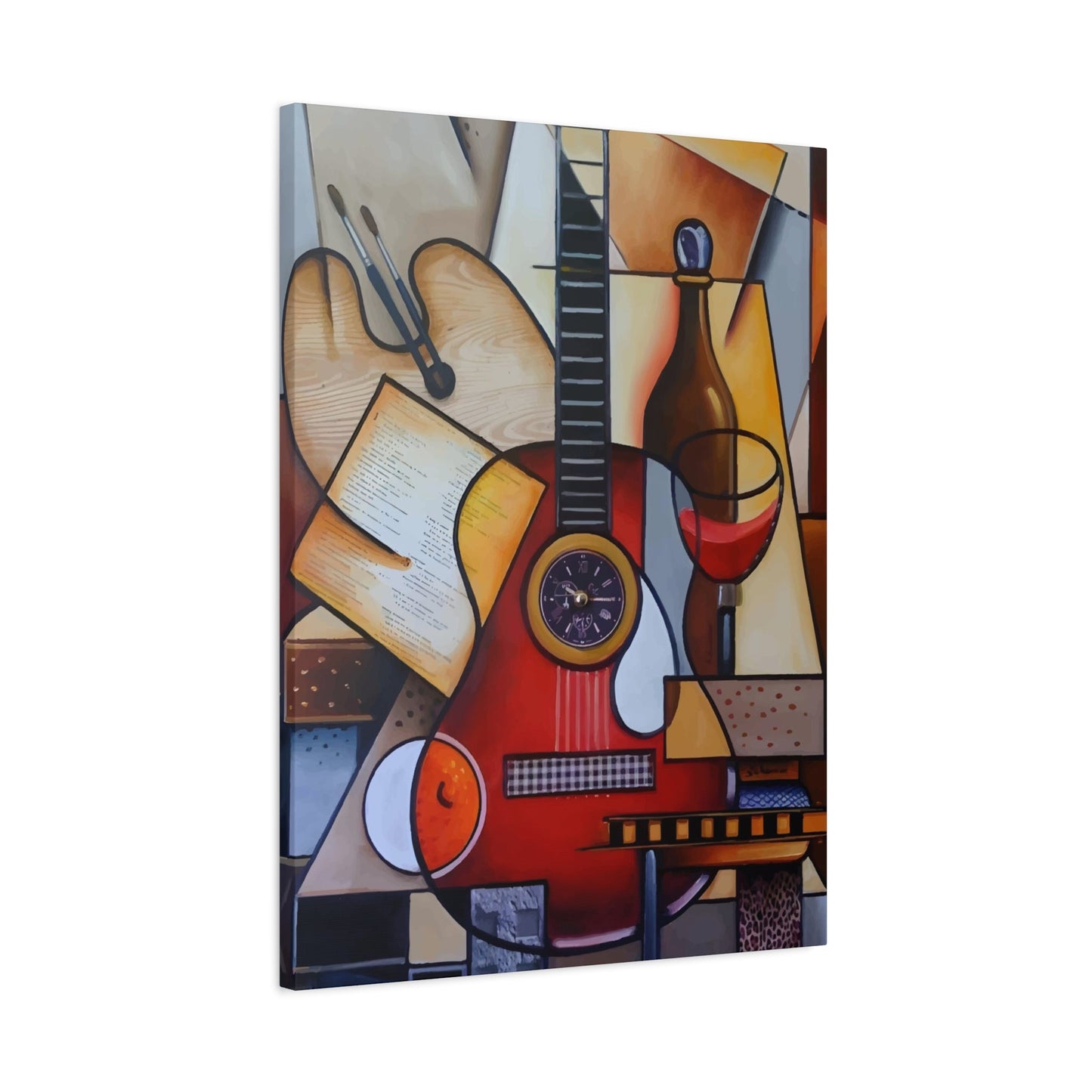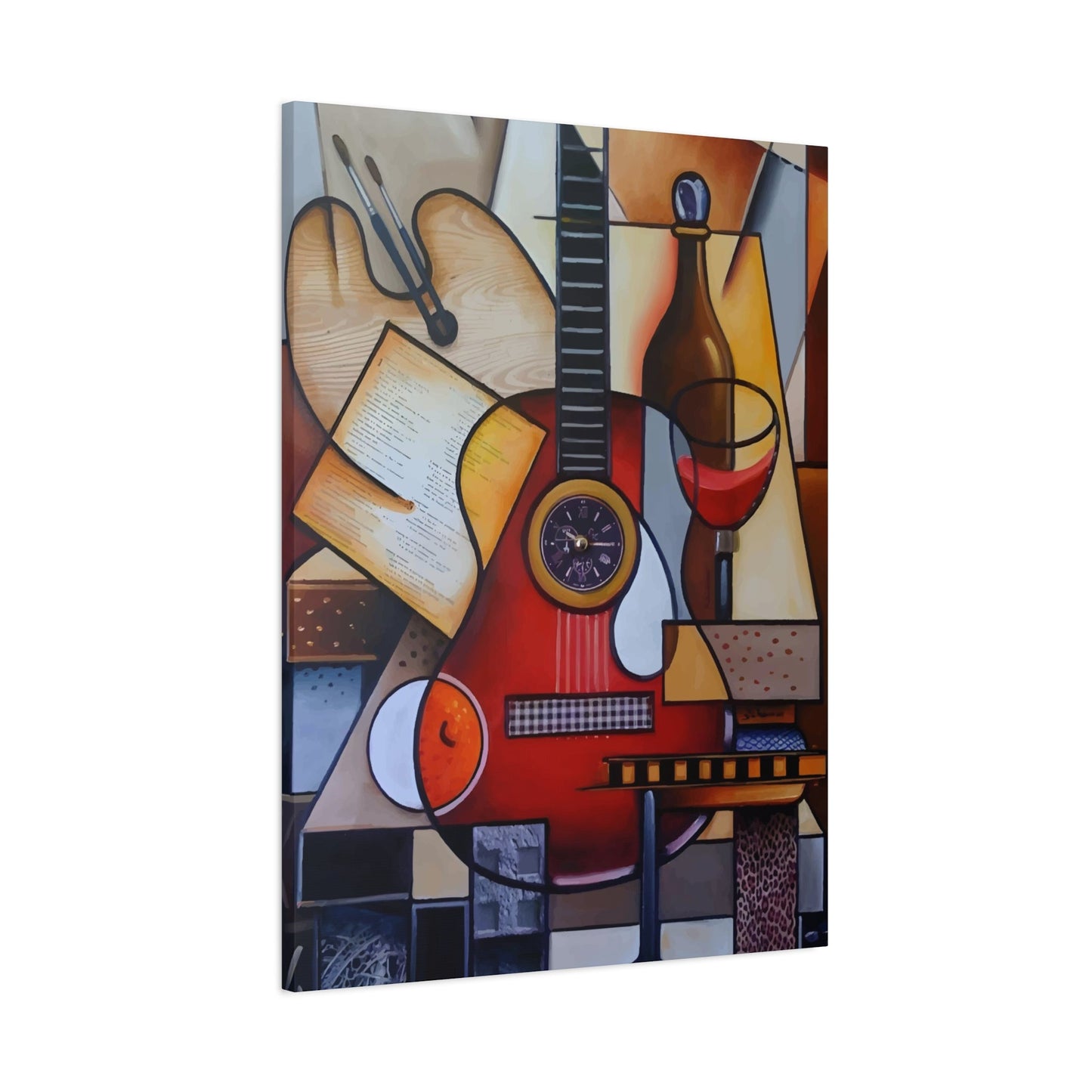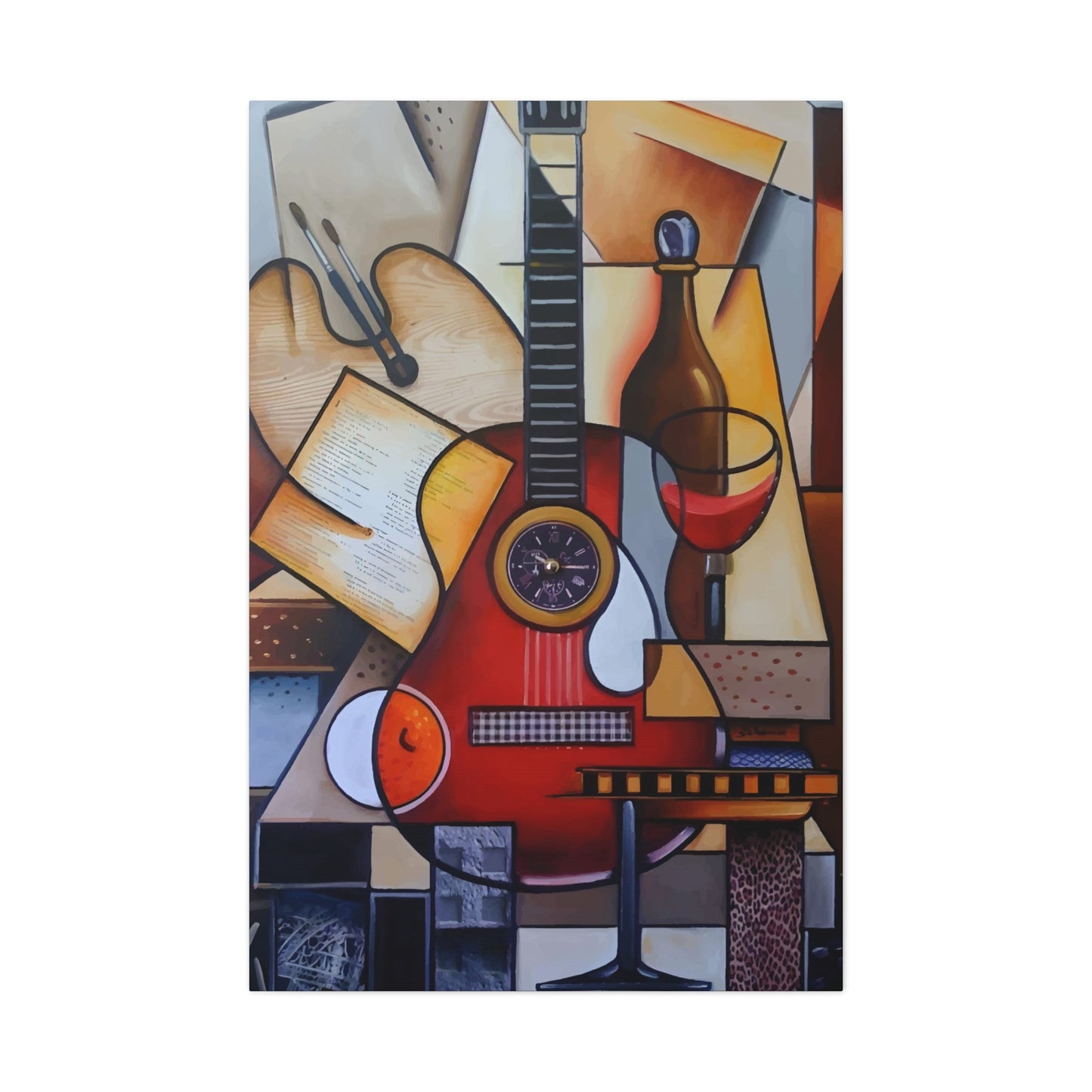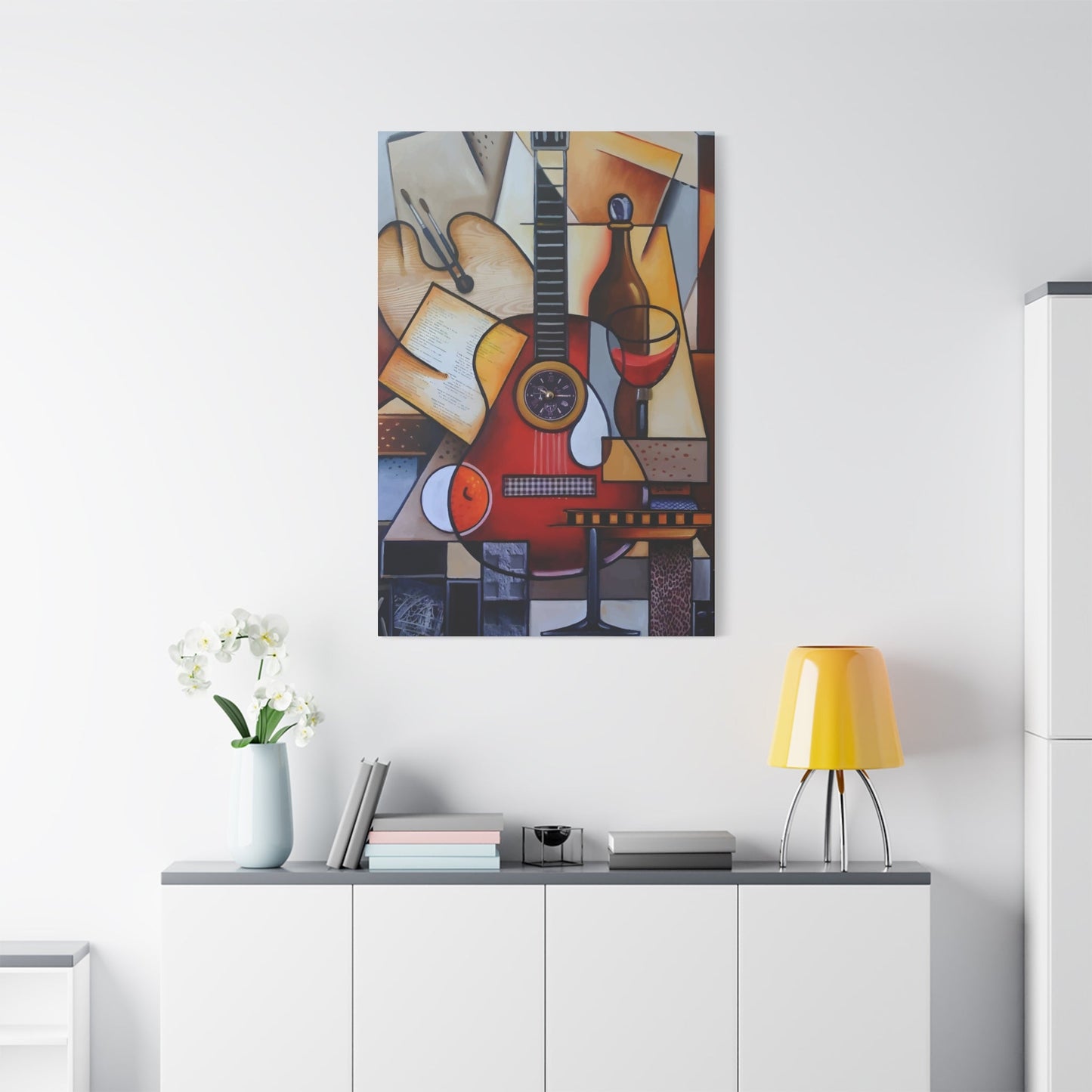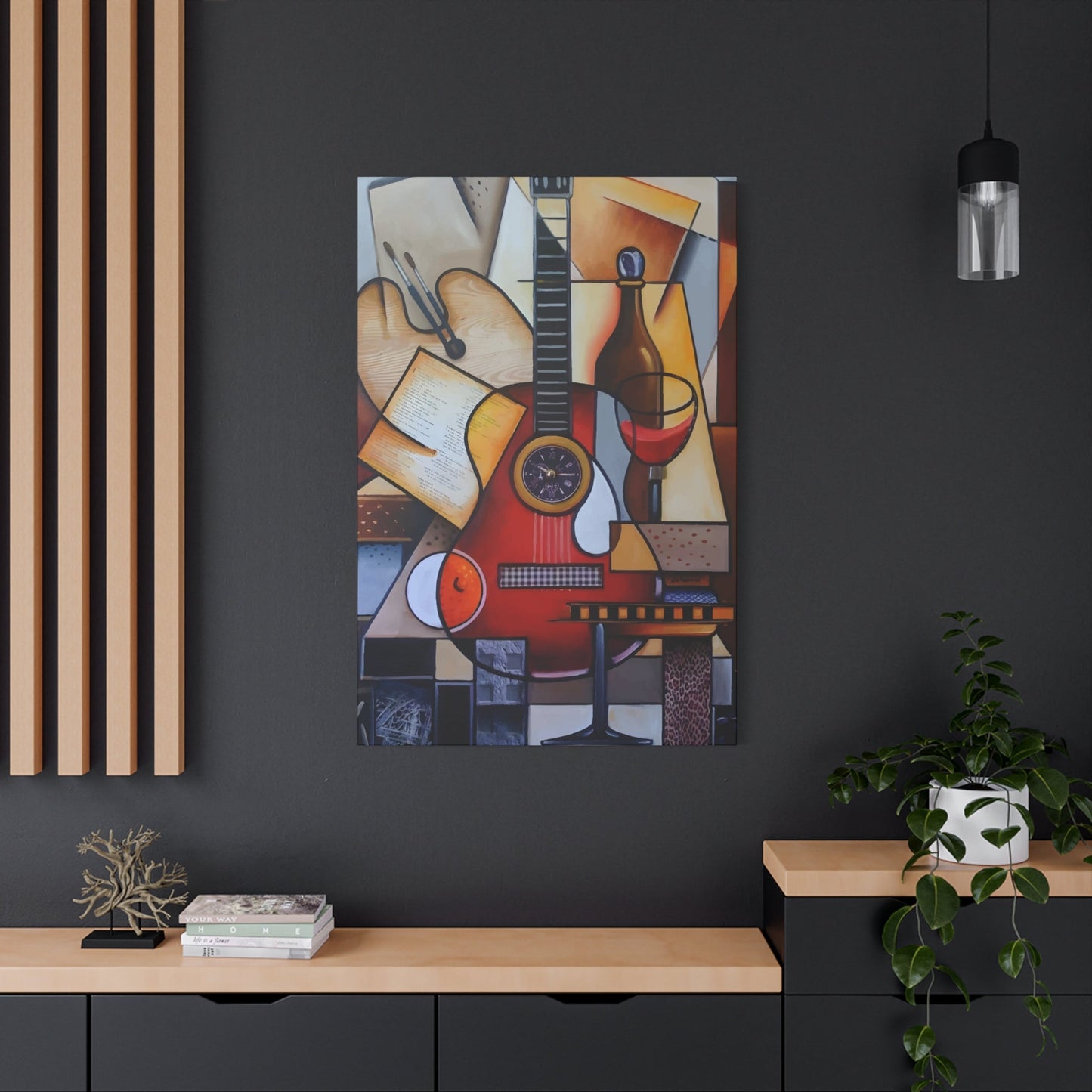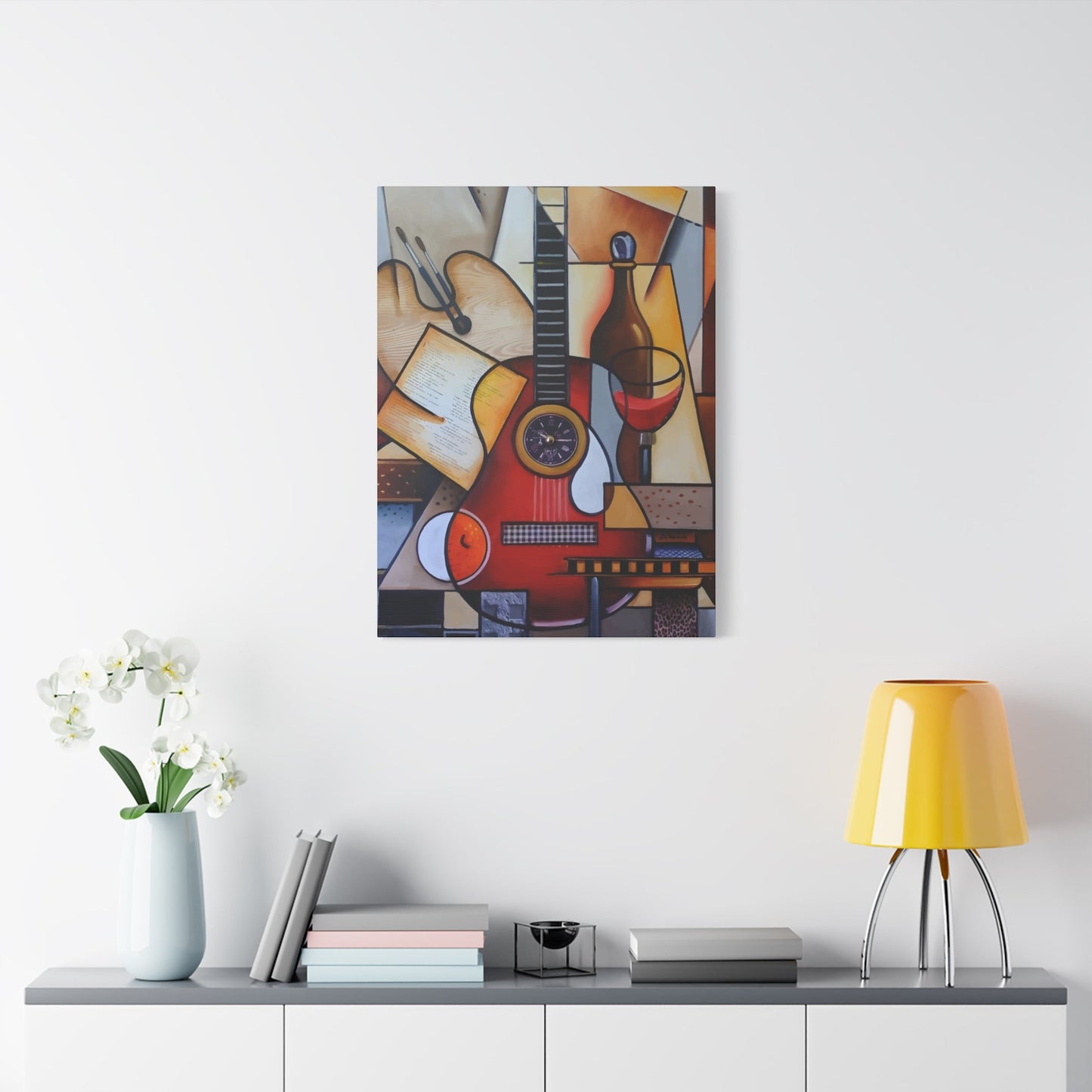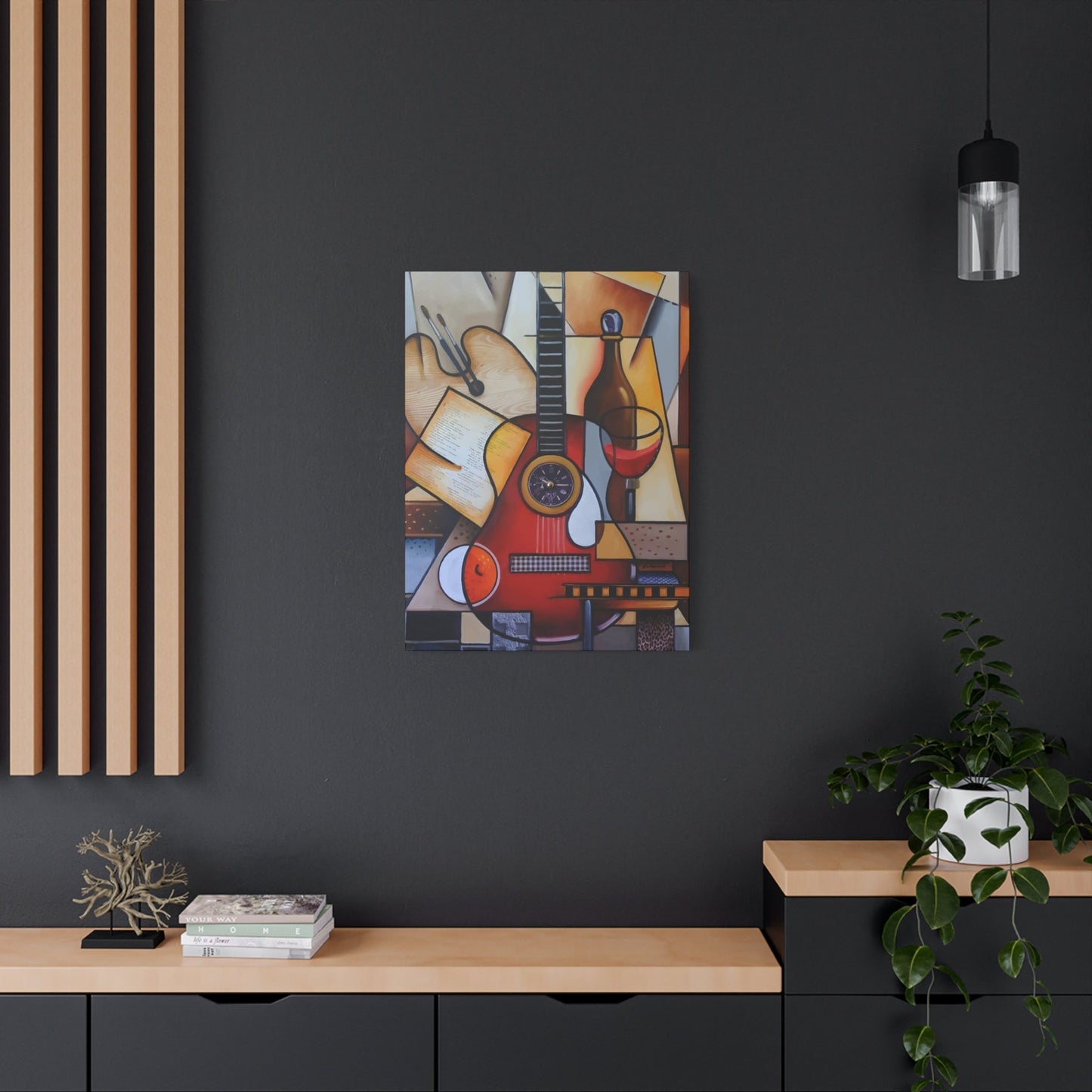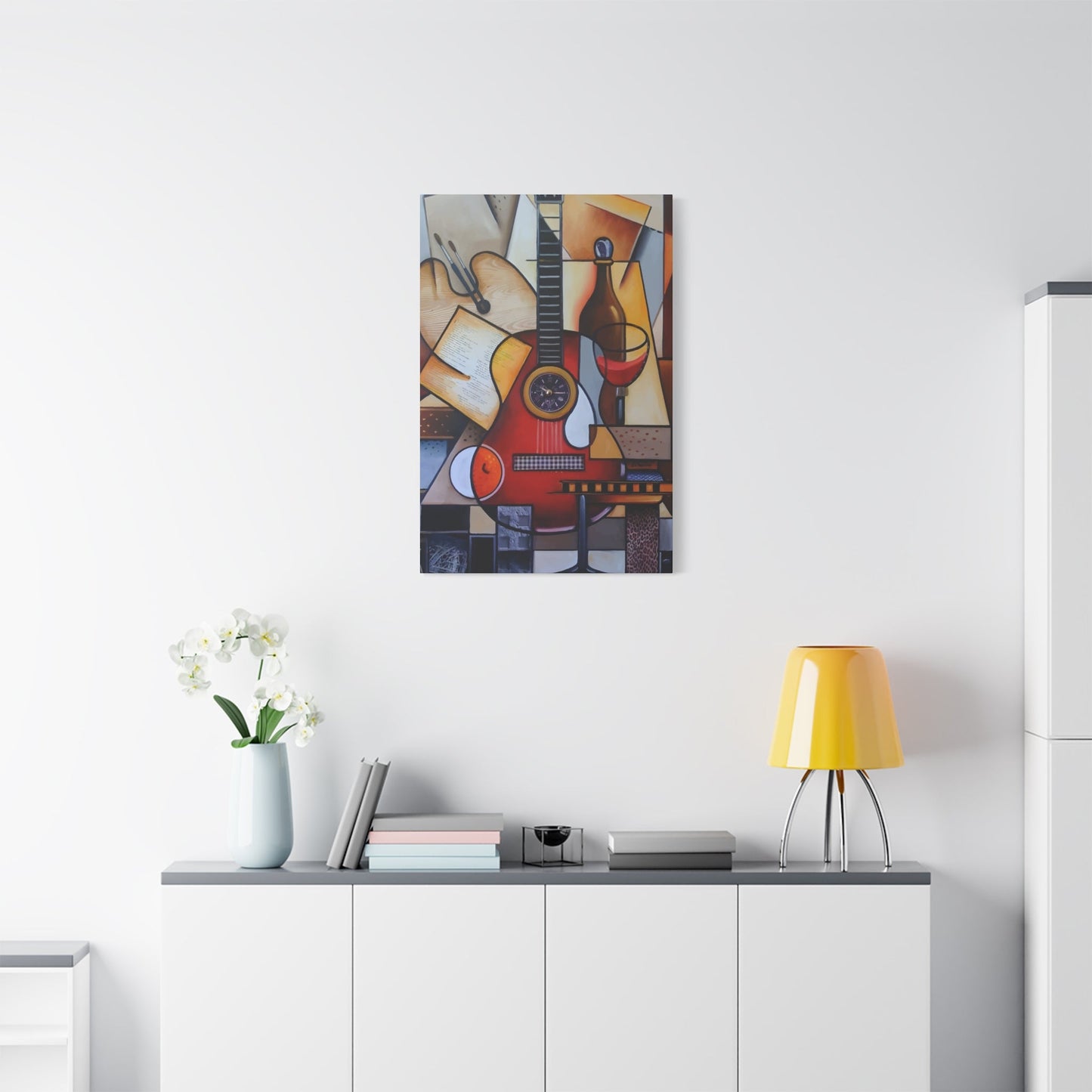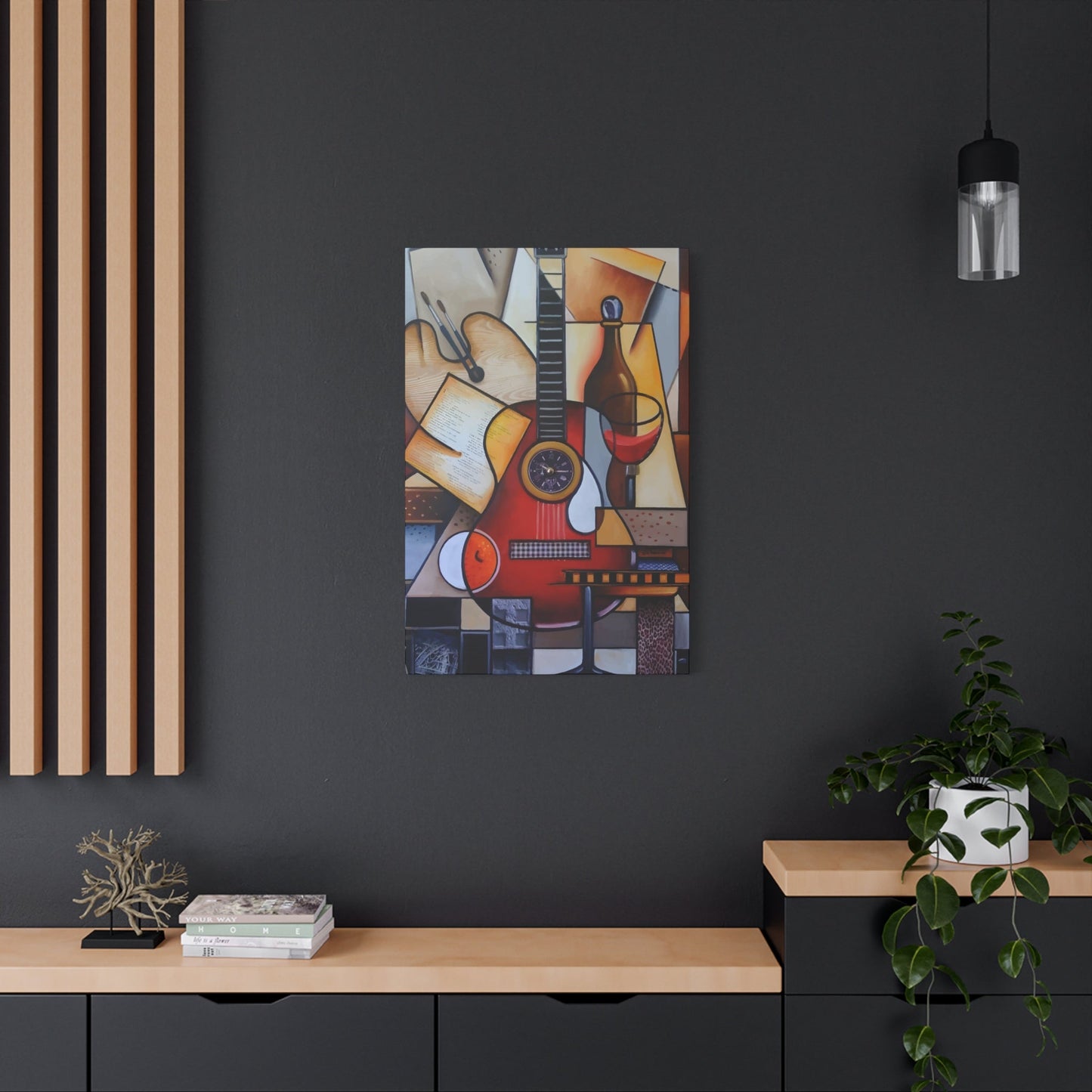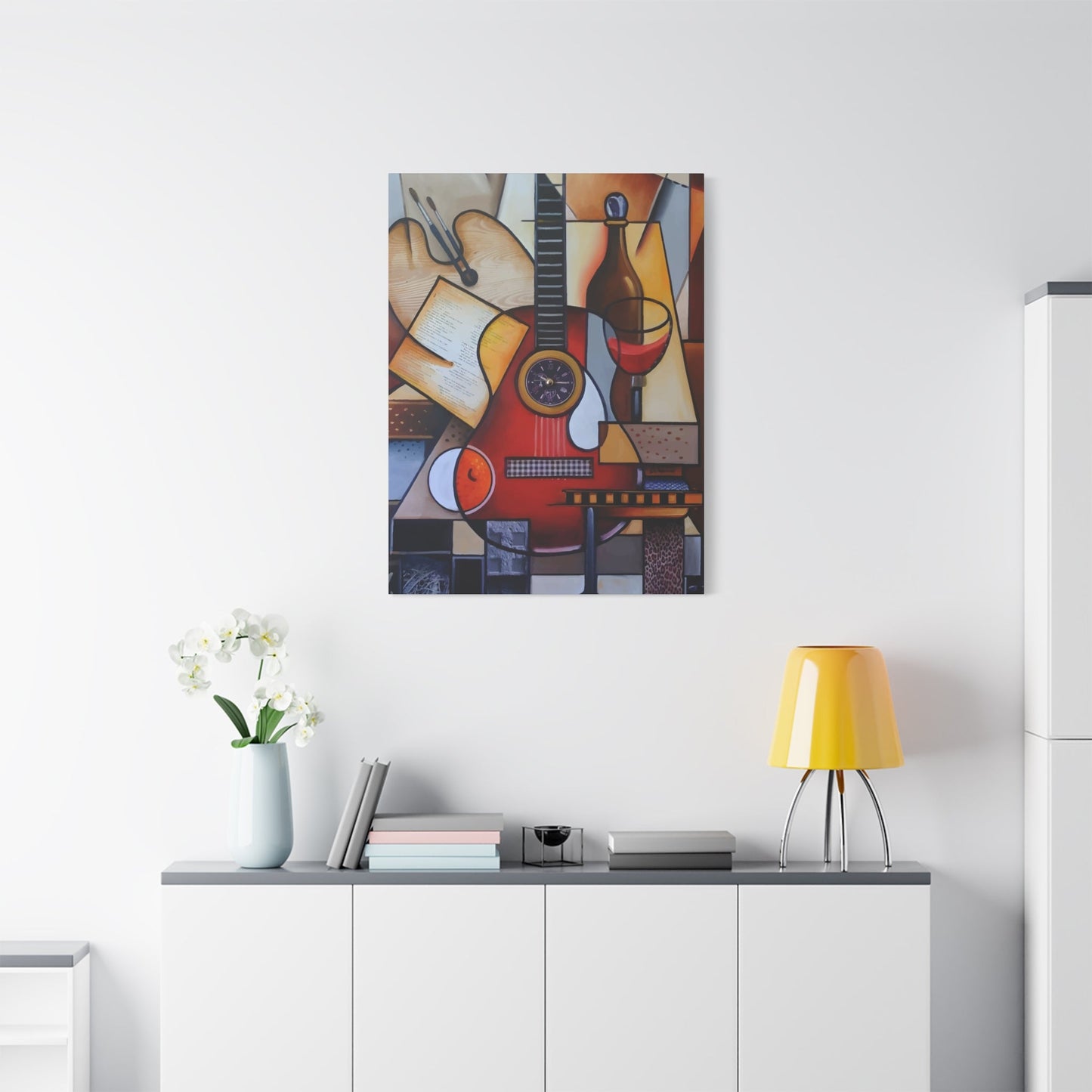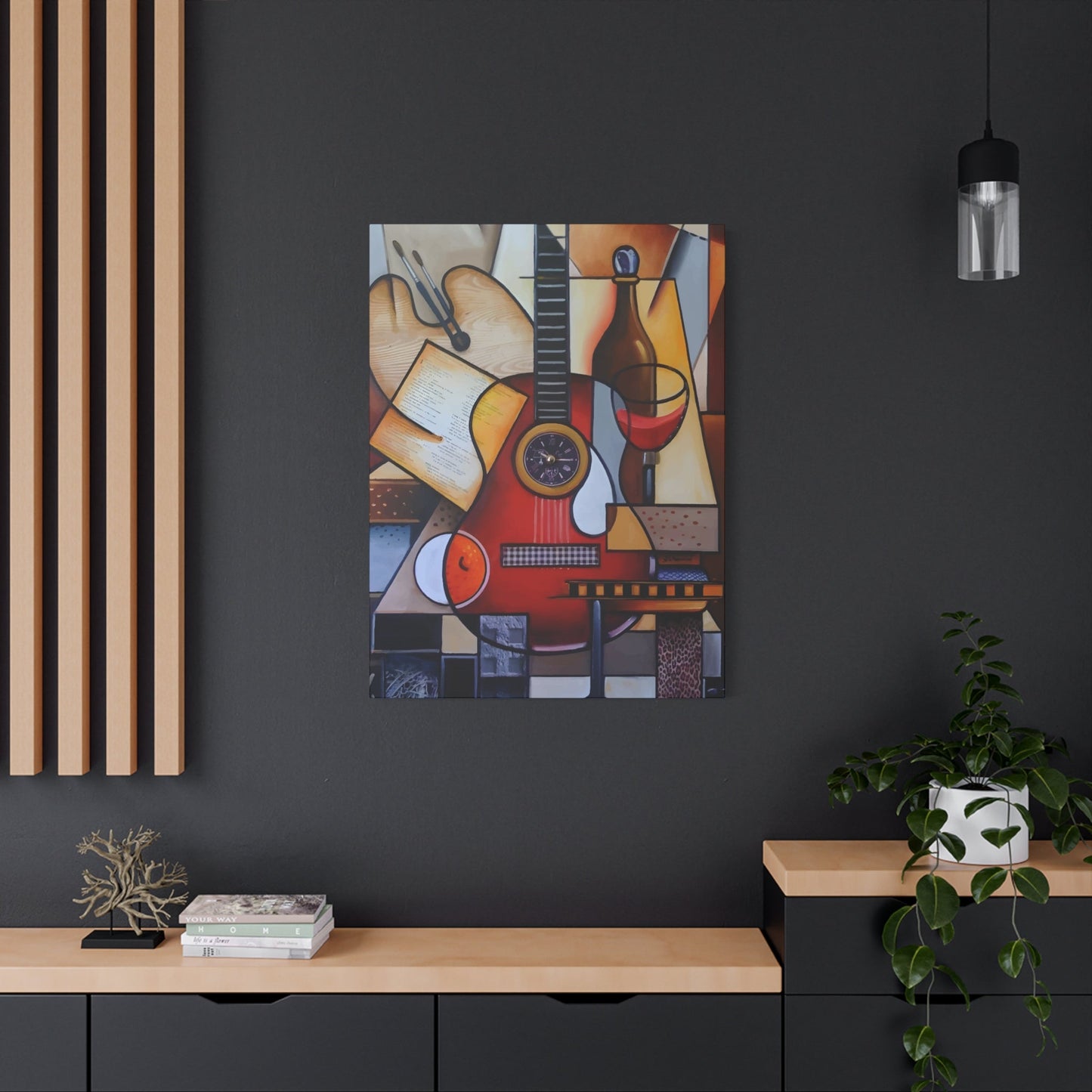Guitar Wall Art: Creative Visual Ideas for Music Lovers
Music has the extraordinary power to transform any environment, and when visual artistry meets musical passion, the result is truly magical. Guitar wall art represents one of the most versatile and captivating ways to bring musical energy into your living environment. Whether you're a seasoned musician, an aspiring artist, or simply someone who appreciates the aesthetic beauty of stringed instruments, incorporating guitar-themed visual elements into your home creates an atmosphere that resonates with creativity and artistic expression.
The appeal of guitar-themed artwork extends far beyond simple decoration. These visual pieces serve as conversation starters, sources of inspiration, and reflections of personal taste and musical appreciation. From the elegant curves of an acoustic body to the sleek lines of an electric model, guitars possess an inherent visual appeal that translates beautifully into artistic representations. This comprehensive exploration will guide you through numerous approaches to incorporating guitar-themed artwork into your living areas, covering everything from traditional prints to innovative DIY projects.
Classic and Vintage Guitar Prints
The timeless appeal of vintage guitar imagery captures the essence of musical history and craftsmanship. Classic guitar prints often feature aged finishes, weathered wood textures, and historical models that tell stories of decades past. These artistic representations showcase the evolution of guitar design, from early parlor guitars to iconic electric models that shaped rock and roll history.
Vintage-style prints work exceptionally well in rooms with traditional or rustic décor themes. The warm, aged tones typically found in these pieces complement earth-toned color schemes and natural materials like wood and leather. Consider selecting prints that feature legendary guitar models such as the Martin D-28 or Gibson Les Paul, as these instruments carry significant cultural and musical significance.
The beauty of classic guitar prints lies in their ability to evoke nostalgia and musical heritage. Many of these pieces incorporate elements like sheet music backgrounds, vintage concert posters, or sepia-toned photography that adds depth and historical context. When selecting vintage-style pieces, look for prints that use high-quality reproduction techniques to ensure the subtle details and textures are clearly visible.
Antique shops and specialized music stores often carry authentic vintage guitar advertisements and promotional materials that make excellent focal points for any music enthusiast's collection. These pieces serve as windows into the marketing and design aesthetics of different musical eras, providing both visual appeal and historical significance.
Modern Abstract Guitar Designs
Contemporary abstract interpretations of guitar imagery offer endless possibilities for creative expression and artistic innovation. These designs break away from literal representations, instead focusing on the essential elements that make guitars visually striking: curves, strings, sound holes, and the interplay of positive and negative visual areas.
Abstract guitar art allows for bold experimentation with color palettes, geometric shapes, and artistic techniques. Some artists create fragmented guitar forms using cubist-inspired approaches, while others employ fluid, organic shapes that suggest musical movement and sound waves. The versatility of abstract designs means they can complement both modern minimalist environments and more eclectic artistic settings.
Digital art has opened new frontiers in abstract guitar design, enabling artists to create pieces that would be impossible with traditional media. These works often feature gradient effects, impossible color combinations, and surreal proportions that challenge viewers' perceptions while maintaining recognizable guitar elements.
When incorporating abstract guitar art into your décor, consider how the colors and shapes will interact with your existing furniture and architectural features. Bold, colorful abstract pieces can serve as dramatic focal points, while more subdued designs provide sophisticated background elements that enhance the overall aesthetic without overwhelming other decorative components.
Acoustic and Electric Guitar Images
The distinction between acoustic and electric guitars provides rich material for artistic exploration. Acoustic guitar imagery often emphasizes the natural beauty of wood grain, the elegant simplicity of the body shape, and the intimate connection between performer and instrument. These images typically evoke feelings of warmth, authenticity, and musical purity.
Electric guitar representations, by contrast, celebrate technological innovation, bold design choices, and the raw energy of amplified music. These pieces often feature dramatic lighting effects, metallic finishes, and angular body shapes that convey power and modernity. The visual contrast between pickup configurations, hardware details, and sleek body contours creates compelling artistic opportunities.
Photography-based pieces showcase both acoustic and electric guitars with stunning detail and technical precision. Professional instrument photography captures subtle reflections, wood textures, and mechanical components with clarity that reveals the craftsmanship involved in guitar construction. These images work particularly well in studios, music rooms, and other areas where technical appreciation is valued.
Mixed-media approaches combine photographic elements with painted or illustrated components, creating unique pieces that bridge realistic representation and artistic interpretation. These hybrid works offer the best of both approaches, providing recognizable detail while allowing for creative expression and personal artistic vision.
Black and White Guitar Photography
Monochromatic guitar photography possesses a timeless elegance that transcends color trends and decorative styles. By stripping away color, black and white photography invites viewers to engage more deeply with the visual elements of the guitar—the shapes, lines, textures, and contrasts that form its essence. This approach emphasizes the sculptural qualities of guitars, transforming an ordinary photo into an extraordinary piece of art.
One of the key strengths of black and white guitar photography is its ability to reveal intricate details that might otherwise be overlooked in full-color images. For example, the grain of the wood, the gleam of metal strings, the delicate curves of the instrument’s body, and even the subtle wear marks from years of playing become more pronounced. The absence of color allows the eyes to explore these features without distraction, highlighting craftsmanship and artistry in every inch of the instrument.
High-contrast black and white images, in particular, create a powerful visual impact. Sharp differences between light and shadow add drama and intensity to the image, giving the guitar a commanding presence on the wall. These bold contrasts can emphasize the graceful arcs of a hollow-body guitar or the stark angularity of an electric guitar’s fretboard, turning the photograph into a dramatic statement piece. Large-format prints in this style work exceptionally well in modern or minimalist interiors, where the clean lines and uncluttered aesthetics are complemented by the simplicity and sophistication of monochrome art.
Professional photographers often employ sophisticated lighting techniques to maximize the artistic potential of black and white guitar imagery. Side lighting, for instance, can accentuate the depth and texture of the instrument, casting shadows that reveal the guitar’s contours and dimensionality. Backlighting, on the other hand, can create striking silhouettes, reducing the guitar to its iconic outline and evoking mystery and allure. Soft diffused lighting can also be used to evoke a gentle, moody atmosphere, perfect for intimate spaces like music rooms or personal studios.
The versatility of black and white guitar photographs makes them ideal for coordinating with diverse décor styles. Unlike colorful artworks that may clash with specific palettes, monochromatic images effortlessly blend into any color scheme, offering flexibility for those who enjoy updating their interiors frequently. Whether displayed in a living room, office, music studio, or gallery, these photographs offer a sophisticated, timeless appeal that resonates with music lovers and art enthusiasts alike.
3D Guitar Wall Sculptures
For music lovers who want to move beyond flat images and prints, 3D guitar wall sculptures offer a tactile and visually dynamic alternative. These pieces bring a new level of depth and texture to any room, literally popping off the wall to create a captivating focal point. Crafted from materials such as wood, metal, resin, or mixed media, 3D guitar sculptures blend art and craftsmanship, turning the iconic guitar shape into a striking, tangible form.
The beauty of 3D guitar sculptures lies in their versatility. Some artists create abstract interpretations of the guitar, playing with stylized curves, fragmented forms, and vibrant colors to convey the energy and emotion of music rather than a literal representation. These abstract pieces can fit perfectly in contemporary or eclectic interiors, serving as bold statements that evoke movement and creativity.
On the other hand, many sculptures replicate classic guitar designs with exquisite detail—capturing every contour, string, and knob. These realistic sculptures celebrate the instrument’s craftsmanship and heritage, making them ideal for traditional or vintage-themed spaces. Whether it’s the sleek lines of a Fender Stratocaster or the warm curves of a hollow-body jazz guitar, these pieces honor the instrument’s design while serving as elegant décor.
3D guitar sculptures are also fantastic conversation starters. Their three-dimensional nature invites viewers to explore the piece from different angles, adding an interactive element to your décor. Positioned thoughtfully, they can elevate a room’s visual interest and reflect your personal passion for music.
Custom Guitar Wall Murals
If you’re looking to make a bold statement and completely transform a room, custom guitar wall murals offer an unparalleled way to create a guitar-themed masterpiece. Unlike smaller prints or sculptures, murals cover entire walls, immersing the space in music-inspired artistry and instantly drawing attention. Whether you prefer photorealistic depictions of iconic guitars and legendary musicians or vibrant abstract designs inspired by guitar shapes, sound waves, or musical notation, murals turn your walls into dynamic canvases that celebrate your passion for music.
Murals work especially well in environments where creativity and inspiration are essential—music studios, practice rooms, recording spaces, or entertainment areas. The visual energy of a guitar mural can motivate musicians during rehearsals or spark conversations during social gatherings. Additionally, murals add a personal and immersive dimension to your space that smaller artworks often cannot match.
You have several options when it comes to creating guitar murals. Commissioning a professional mural artist guarantees a high-quality, customized piece tailored to your exact vision and room size. Artists can incorporate elements like your favorite guitar model, music legends, or even abstract patterns reflecting the rhythm and movement of music. For those seeking a more budget-friendly or temporary solution, peel-and-stick vinyl decals offer a versatile, DIY-friendly alternative. These decals come in various designs and can be easily applied or removed, allowing you to refresh your décor whenever inspiration strikes.
Design Tip: When planning your mural, consider colors that harmonize with your existing room palette to ensure the artwork complements rather than clashes with your décor. For added personality, integrate musical elements such as handwritten lyrics, sheet music snippets, or stylized musical notes to make the mural truly unique and meaningful.
Repurposed Guitar Parts Wall Art
For those who appreciate both sustainability and artistic expression, repurposing actual guitar parts into wall art offers a unique way to celebrate music while giving discarded instruments a second life. This approach blends creativity with environmental consciousness, turning old guitar strings, tuning pegs, fretboards, pickups, and even sound holes into visually compelling compositions that double as meaningful décor.
Repurposed guitar parts wall art is especially suited to industrial, bohemian, and eclectic interior designs. These styles embrace raw materials, vintage elements, and artistic assemblage, making them perfect backdrops for these one-of-a-kind creations. Each piece crafted from reclaimed guitar components tells its own story—whether it’s the wear on an old fretboard, the patina on rusted tuning machines, or the warped shape of a sound hole—imbuing your space with authenticity and character that mass-produced art often lacks.
Creating repurposed guitar art can be a rewarding DIY project. Start by sourcing old or broken guitar parts from thrift shops, music stores, or instrument repair shops—places where forgotten or damaged guitars are often found. Once you’ve collected an assortment of pieces, experiment with arranging them into patterns, abstract shapes, or even recognizable guitar silhouettes. The design possibilities are vast, ranging from symmetrical layouts that emphasize form and balance to freeform collages that highlight texture and contrast.
To preserve your artwork and ensure its longevity, seal the assembled parts with a clear resin or cover the piece with a glass panel. This not only protects the components from dust and damage but also gives the work a polished, gallery-ready finish.
Guitar Silhouette Wall Decals
For those who prefer a sleek, minimalist aesthetic but still want to infuse their space with musical passion, guitar silhouette wall decals offer an effortless and stylish solution. These vinyl stickers come in a wide variety of sizes and styles—from full guitar shapes to simple outlines of the body, neck, or headstock—allowing you to customize your décor with subtle or bold musical elements depending on your taste.
One of the standout benefits of guitar silhouette decals is their ease of application and removal. Ideal for renters or anyone who likes to refresh their living spaces frequently, these decals adhere smoothly to most surfaces without damaging walls or leaving residue when peeled off. This flexibility lets you experiment with different placements, sizes, and groupings without commitment, making it easy to keep your space evolving alongside your musical journey.
Guitar silhouette decals can make a subtle statement on their own—adding an artistic touch to an otherwise plain wall—or they can be clustered with multiple decals to create a dynamic gallery wall that celebrates guitar culture in a more visually impactful way. The simplicity of the silhouettes lends itself well to modern, Scandinavian, or urban interiors where clean lines and uncluttered décor are key.
Placement Idea: Consider applying these decals near your dedicated music corner or practice area, such as around your amplifier or above your instrument stand. Another great option is to surround a floating shelf that displays your favorite guitar picks, miniatures, or sheet music, enhancing the overall musical theme of the space without overwhelming it.
Mixed Media Collages
For music lovers who want to create a deeply personal and visually rich piece of wall art, mixed media collages are an excellent way to celebrate the guitar’s significance in your life. By combining photos, guitar picks, sheet music, and small guitar parts, you can craft a unique, multi-dimensional artwork that goes beyond traditional prints or sculptures. This type of collage serves both as a keepsake and a beautiful tribute, reflecting your personal musical journey and passions.
The beauty of mixed media is its endless versatility. Start with a sturdy base, such as a wooden frame or canvas, and layer elements like photographs of your favorite guitars or memorable concerts, alongside real guitar picks arranged artistically. Adding fragments of sheet music or handwritten lyrics injects an intimate touch that evokes memories and emotions tied to specific songs or performances. Small guitar components like tuning pegs, strings, or pieces of fretboard can add texture and authenticity to the piece.
You can further personalize your collage by including concert stubs, ticket stubs, or even backstage passes from shows that meant something special to you. Handwritten notes or paintings of your favorite instruments offer additional creative layers, turning the artwork into a tangible storybook of your relationship with music.
The tactile nature of mixed media collages invites viewers to explore the piece closely, discovering new details with each glance. It’s a dynamic form of self-expression that allows you to celebrate your love of the guitar in a way that’s both visually engaging and emotionally meaningful.
Minimalist Line Art of Guitars
Minimalist guitar line art represents the ultimate in artistic reduction, distilling the complex form of a guitar into its most essential visual elements. These pieces typically use simple, continuous lines to suggest guitar shapes without including unnecessary detail or ornamentation. The result is clean, modern artwork that fits seamlessly into contemporary living environments.
Single-line drawings, where the entire guitar form is created without lifting the drawing instrument, have become particularly popular in recent years. These pieces demonstrate artistic skill while maintaining visual simplicity, creating engaging artwork that rewards careful observation. The mathematical precision required to create effective line art appeals to viewers who appreciate technical excellence.
Vector-based digital line art allows for perfect scalability and reproduction, making it ideal for large-format printing. These pieces maintain their clarity and precision regardless of size, ensuring that the clean lines and geometric relationships remain visually appealing whether displayed as small accent pieces or room-dominating installations.
The monochromatic nature of most line art makes it highly versatile for interior design applications. These pieces can provide visual interest without competing with colorful furniture, textiles, or other decorative elements. They work particularly well in offices, studios, and other areas where visual distraction should be minimized.
Colorful, Vibrant Guitar Paintings
Bold, colorful guitar paintings inject energy and personality into any living environment. These pieces often employ vivid color palettes, expressive brushwork, and dynamic compositions that celebrate the joy and excitement of musical expression. Unlike more subdued approaches, colorful paintings make confident artistic statements that command attention and spark conversation.
Acrylic and oil paintings offer rich texture and dimensional quality that photography and digital art cannot replicate. The physical presence of paint on canvas creates subtle variations in surface texture and light reflection that add depth and visual interest. Many artists use thick impasto techniques to create sculptural surfaces that enhance the three-dimensional quality of the work.
Color theory plays a crucial role in effective guitar painting. Complementary color schemes create vibrant contrast and visual excitement, while analogous palettes produce more harmonious, soothing effects. Some artists use color to suggest musical concepts, employing warm hues to represent major keys and cooler tones for minor modes.
Contemporary guitar paintings often incorporate mixed-media elements, combining traditional paint with collage materials, metallic leaf, or other textural components. These approaches create unique pieces that blur the boundaries between painting and sculpture, resulting in artwork that engages multiple senses and invites close examination.
Guitar Silhouettes for Sleek Décor
Silhouette art offers a sophisticated approach to guitar imagery that emphasizes form over detail. These pieces typically present guitar shapes as solid, dark forms against contrasting backgrounds, creating strong graphic impact with minimal visual complexity. The resulting artwork is both immediately recognizable and artistically refined.
Metal silhouettes have become increasingly popular for both indoor and outdoor applications. Cut from steel, aluminum, or other metals, these pieces can be powder-coated in various colors or left with natural metallic finishes. The durability of metal construction makes these pieces suitable for patios, gardens, and other outdoor environments where traditional artwork would not survive.
Backlit silhouettes create dramatic lighting effects that transform simple shapes into compelling visual experiences. LED strip lighting or professional architectural lighting can be positioned behind translucent panels to create silhouette effects that change throughout the day as ambient lighting conditions vary.
Digital silhouettes printed on various substrates offer affordable alternatives to custom metalwork while maintaining the clean, graphic appeal of this artistic approach. High-quality printing on materials like acrylic, canvas, or photographic paper produces professional results suitable for any decorative application.
Large Canvas Guitar Art for Statement Walls
Oversized guitar artwork creates immediate visual impact and establishes a room's artistic character. These large-format pieces work best on walls with sufficient visual breathing room, where they can be appreciated without competing with other decorative elements. The scale of these works transforms them from mere decoration into architectural features that define the character of the living environment.
Multi-panel installations, where a single guitar image is divided across multiple canvases, create dynamic visual rhythms and allow for flexible arrangement options. These pieces can be hung with varying spacing between panels to create different visual effects, and the individual panels can be rearranged to suit changing decorative needs.
The production quality of large-format prints is crucial for maintaining visual appeal at close viewing distances. High-resolution source images and professional printing equipment ensure that detail remains sharp and colors stay vibrant even when viewed from just a few feet away. Cheap printing processes become obvious when scaled to large sizes, making quality investment essential.
Professional framing and mounting become increasingly important for large pieces, both for aesthetic reasons and structural stability. Heavy canvases require robust hanging systems and wall anchors to ensure safe installation. Many large pieces benefit from professional installation to ensure proper positioning and secure mounting.
Guitar-Themed Gallery Walls
Gallery wall arrangements allow for creative combinations of multiple guitar-related pieces in cohesive displays. These installations can include photographs, paintings, prints, and even three-dimensional objects arranged in visually pleasing compositions. The key to successful gallery walls is balancing variety with cohesion, creating displays that feel intentional rather than random.
Theme-based gallery walls might focus on specific guitar types, historical periods, or artistic styles. For example, a vintage-themed gallery could combine old concert posters, vintage guitar advertisements, black and white musician photographs, and antique album covers. The common theme unifies diverse pieces while allowing for interesting visual contrasts.
Color coordination helps tie disparate pieces together in gallery wall arrangements. This doesn't mean every piece must share identical colors, but having a consistent color palette or repeated accent colors throughout the display creates visual harmony. Matting and framing choices also contribute significantly to the overall cohesive appearance.
The physical arrangement of pieces in gallery walls requires careful planning and often benefits from creating paper templates before hanging the actual artwork. Starting with a central anchor piece and building outward often produces more balanced results than trying to fill predetermined grid patterns.
DIY Guitar Art Projects
Creating your own guitar-themed artwork offers unlimited creative possibilities while providing the satisfaction of personal artistic expression. DIY projects can range from simple tracing and coloring activities to complex mixed-media constructions that incorporate various materials and techniques. The key is matching project complexity to available skills and desired outcomes.
Stenciling techniques allow for precise, repeatable results even for those with limited artistic experience. Guitar-shaped stencils can be purchased or created using cardboard or plastic sheets. These stencils can be used with spray paint, acrylic paints, or even chalk for temporary applications. Multiple stencil layers can create complex, colorful designs with professional appearance.
Collage techniques offer opportunities to incorporate personal memorabilia like concert tickets, album covers, sheet music, and photographs into guitar-themed compositions. These projects create highly personalized artwork that reflects individual musical experiences and preferences. Decoupage medium allows for smooth integration of paper elements with painted backgrounds.
Three-dimensional projects might involve constructing guitar shapes from wood, cardboard, or foam materials that can then be decorated with various surface treatments. These pieces can incorporate lighting, mirrors, or other special effects to create unique decorative objects that serve as both artwork and functional items.
Guitar Art as Gifts for Musicians
Guitar-themed artwork makes thoughtful gifts for musicians, music students, and music enthusiasts. These pieces demonstrate understanding of the recipient's interests while providing lasting decorative value. The key to successful gift selection is matching the artwork style to the recipient's personal taste and living environment.
Custom portrait work that incorporates the recipient's actual instrument creates highly personal gifts with special emotional significance. Many artists specialize in creating custom guitar portraits from photographs, capturing the unique characteristics of individual instruments. These pieces become treasured possessions that celebrate the personal relationship between musician and instrument.
Vintage-style pieces work well for musicians who appreciate musical history and traditional craftsmanship. Prints featuring classic guitar models, vintage advertisements, or historical musical figures appeal to those who understand and respect the heritage of their chosen instrument.
Contemporary abstract pieces suit musicians who embrace modern musical styles and experimental approaches. Bold, colorful artwork that suggests energy and movement might appeal to rock, jazz, or fusion musicians who appreciate artistic innovation and creative expression.
Framing Tips to Enhance Guitar Prints
Proper framing significantly impacts the presentation and longevity of guitar artwork. The frame serves both protective and aesthetic functions, creating a finished appearance while preserving the artwork from environmental damage. Frame selection should complement both the artwork and the intended display environment.
Mat selection provides opportunities to enhance color relationships and create visual breathing room around the artwork. Colored mats can pick up accent colors from the print, while neutral mats allow the artwork to speak without interference. Multiple mat layers create depth and visual sophistication, particularly effective for smaller prints.
Glass selection affects both protection and appearance. Standard glass provides adequate protection for most applications, while museum-quality glass offers superior UV protection and reduced reflection. Anti-reflective coatings become increasingly important for pieces displayed in brightly lit areas or opposite windows.
Frame style should complement both the artwork and the room's decorative theme. Traditional wooden frames suit vintage-style prints and classic décor, while sleek metal frames complement modern artwork and contemporary environments. The frame should enhance rather than compete with the artwork for visual attention.
Guitar Art Combined with Musical Notes
Integrating musical notation elements with guitar imagery creates sophisticated artwork that appeals to musically educated viewers. Sheet music backgrounds, staff lines, and note symbols add layers of meaning and visual interest to guitar-themed pieces. These combinations celebrate both visual and musical aspects of guitar culture.
Vintage sheet music provides authentic backgrounds for guitar imagery, creating pieces with historical depth and musical authenticity. Public domain sheet music from classical composers or traditional folk songs can be legally incorporated into artistic compositions without copyright concerns. The aged appearance of vintage sheet music adds character and visual texture.
Contemporary notation techniques, including tablature specific to guitar playing, create artwork that speaks directly to guitarists. Tab notation is instantly recognizable to guitar players and adds technical authenticity to guitar-themed pieces. Computer-generated notation ensures perfect clarity and professional appearance.
Abstract representations of musical concepts like rhythm, harmony, and melody can be suggested through visual elements like flowing lines, geometric patterns, or color relationships. These approaches create artwork that suggests musical concepts without literal notation, appealing to broader audiences while maintaining musical connections.
Guitar Portraits of Famous Musicians
Artistic representations of legendary guitarists celebrate musical heroes while creating compelling visual artwork. These pieces range from realistic portraits to stylized interpretations that capture the essence and energy of influential musicians. The key is balancing recognizable likenesses with artistic interpretation.
Historical accuracy becomes important when creating portraits of deceased musicians, both for aesthetic reasons and potential copyright considerations. Working from public domain photographs or creating sufficiently transformed interpretations helps avoid legal complications while maintaining recognizable characteristics.
Contemporary digital techniques allow for creative interpretations that blend photography with artistic elements. Digital manipulation can create unique visual effects that suggest musical energy, sound waves, or performance dynamics. These approaches produce artwork that captures both physical likeness and musical spirit.
Mixed-media approaches might incorporate elements like vinyl records, concert tickets, or other memorabilia associated with specific musicians. These additions create dimensional artwork that tells broader stories about musical careers and cultural impact. The result is artwork that functions as both visual decoration and historical documentation.
Rustic Guitar Art for Cozy Environments
Rustic guitar artwork creates warm, inviting atmospheres that celebrate traditional craftsmanship and natural materials. These pieces often emphasize wood textures, weathered finishes, and handcrafted details that suggest authenticity and artisanal quality. The appeal lies in the contrast with mass-produced, technological items that dominate modern life.
Reclaimed wood serves as an excellent medium for guitar-themed artwork, providing authentic texture and environmental consciousness. Old barn wood, fence boards, or salvaged furniture pieces can be transformed into backing materials for guitar silhouettes or painted guitar imagery. The existing weathering and patina add character that cannot be artificially reproduced.
Pyrography, or wood burning, creates permanent guitar imagery directly on wood surfaces. This technique produces rich, brown tones that complement natural wood grain while creating detailed images with excellent longevity. The process requires skill and patience but results in unique pieces with handcrafted appeal.
Rustic framing using branch wood, barn wood, or other natural materials enhances the overall aesthetic and creates cohesive presentations. These frames should appear slightly rough or imperfect to maintain the handcrafted appearance that defines rustic style. The goal is suggesting artistic authenticity rather than commercial perfection.
Mixing Guitar Art with Other Music-Themed Décor
Successful integration of guitar artwork with other musical decorative elements requires careful attention to visual balance and thematic consistency. The goal is creating cohesive environments that celebrate music culture without becoming cluttered or overwhelming. Strategic placement and scale considerations help achieve this balance.
Instrument displays combining actual guitars with guitar artwork create multi-dimensional presentations that engage multiple senses. Wall-mounted guitar hangers can be arranged with framed prints to create gallery-style displays that showcase both functional instruments and artistic representations. This approach works particularly well in music rooms and studios.
Vintage music memorabilia like concert posters, album covers, and promotional materials can be combined with guitar artwork to create comprehensive displays of music culture. The key is maintaining consistent color schemes and frame styles that tie diverse pieces together into cohesive presentations.
Lighting plays a crucial role in mixed-media music displays. Track lighting or individual picture lights can highlight specific pieces while creating dramatic shadows and reflections from three-dimensional objects. LED strip lighting can create ambient effects that enhance the overall atmosphere without causing glare or heat problems.
Color coordination strategies help unify diverse musical elements into cohesive decorative schemes. This might involve selecting artwork with similar color palettes, using consistent matting colors, or choosing frames with matching finishes. The goal is suggesting intentional curation rather than random accumulation.
Scale relationships between different elements require careful consideration. Large guitar artwork can overwhelm small instruments, while tiny prints might disappear next to full-sized guitars. Testing different arrangements and stepping back to evaluate overall visual balance helps achieve successful combinations.
Seasonal rotation of music-themed décor keeps displays fresh and interesting while accommodating changing personal preferences. Having larger collections of artwork than can be displayed simultaneously allows for regular updates that reflect current interests or seasonal themes. Storage solutions protect unused pieces while keeping them readily accessible.
The psychological impact of music-themed décor extends beyond simple decoration. These environments can inspire creativity, provide comfort, and express personal identity in ways that generic artwork cannot achieve. The connection between visual and musical elements creates layered experiences that engage multiple aspects of human perception and emotion.
Professional consultation might be valuable for creating extensive music-themed displays, particularly in commercial environments like music stores, recording studios, or performance venues. Design professionals understand how to balance aesthetic concerns with practical requirements like acoustics, traffic flow, and functional lighting.
Budget considerations affect both initial purchases and long-term maintenance of music-themed décor. Quality artwork represents investment in lasting value, while cheaper alternatives might require frequent replacement. Planning purchases over time allows for gradual accumulation of high-quality pieces rather than compromising on inferior options.
The educational value of well-curated music displays can inspire learning and appreciation for musical history and culture. Young people exposed to visual representations of musical excellence may develop deeper appreciation for musical arts and perhaps pursue musical education themselves. This adds social value to what might otherwise be considered purely decorative choices.
Technology integration offers new possibilities for interactive music-themed displays. Digital frames can rotate through collections of guitar artwork, while smart lighting systems can create dynamic effects that respond to musical performances. These innovations blend traditional decorative approaches with contemporary technological capabilities.
Maintenance requirements vary significantly among different types of guitar artwork. Photographs and prints require protection from UV damage and humidity, while painted pieces might need periodic cleaning or touch-up work. Understanding these requirements helps ensure long-term preservation of valuable artwork investments.
Authentication and provenance become important considerations when collecting music-related artwork, particularly pieces associated with famous musicians or historical events. Documentation of artwork history and condition helps preserve value while providing interesting background information for future owners.
Insurance considerations might apply to valuable music-themed artwork collections. Documenting pieces with photographs and written descriptions helps support insurance claims if theft or damage occurs. Some pieces might require professional appraisal to establish accurate replacement values.
The social aspects of music-themed décor include its role in establishing personal identity and facilitating connections with others who share similar interests. Guitar artwork serves as visual cues that communicate musical appreciation and might spark conversations that lead to musical collaborations or friendships.
Cultural sensitivity becomes relevant when incorporating music-themed artwork that represents specific musical traditions or ethnic backgrounds. Understanding the cultural significance of musical instruments and imagery helps ensure respectful representation that honors rather than appropriates cultural heritage.
Environmental considerations affect both artwork production methods and display materials. Sustainable printing methods, recycled frame materials, and non-toxic mounting adhesives contribute to environmentally responsible decorating choices. These considerations align with broader environmental consciousness that many music enthusiasts embrace.
Future trends in guitar artwork might incorporate emerging technologies like augmented reality, where static prints could trigger interactive digital content when viewed through mobile devices. These innovations could provide additional layers of information and engagement while maintaining the visual appeal of traditional artwork.
The therapeutic value of music-themed environments extends to healthcare settings, music therapy programs, and other applications where positive psychological effects are desired. Guitar artwork can contribute to healing environments that support emotional well-being and stress reduction through visual connection to beloved musical experiences.
Educational institutions benefit from music-themed artwork that supports music education programs and encourages student participation in musical activities. Well-designed displays can make music programs more visible and attractive to potential participants while creating inspiring environments for current students.
Community spaces like libraries, community centers, and cultural facilities can use guitar artwork to celebrate local musical culture and attract diverse audiences. These applications require artwork selections that appeal to broad demographic groups while remaining culturally appropriate and educationally valuable.
The intersection of guitar artwork with emerging artistic movements continues evolving as new technologies and cultural trends influence both music and visual arts. Staying informed about these developments helps collectors and enthusiasts make informed decisions about artwork acquisitions and display strategies.
International perspectives on guitar artwork reflect different cultural approaches to musical instruments and visual representation. Understanding these differences enriches appreciation for diverse artistic traditions while suggesting new approaches to guitar-themed decoration that transcend cultural boundaries.
The role of guitar artwork in supporting musicians and music education extends beyond personal decoration to include fundraising possibilities for music programs, artist support through artwork purchases, and educational outreach through artist residencies and workshop programs.
Conclusion
The world of guitar wall art offers endless possibilities for music enthusiasts seeking to transform their living environments into visual celebrations of musical passion. From classic vintage prints that honor musical heritage to cutting-edge abstract designs that push artistic boundaries, guitar-themed artwork provides options for every taste, budget, and decorative style. The versatility of this art form allows for seamless integration into diverse architectural settings, from intimate home studios to grand public galleries.
The journey through various approaches to guitar artwork reveals the deep connection between visual and musical arts. Whether displayed as dramatic statement pieces or subtle accent elements, these works serve multiple functions beyond simple decoration. They inspire creativity, facilitate social connections, preserve cultural heritage, and provide daily reminders of the transformative power of music. The emotional resonance of guitar imagery speaks to universal human experiences of artistic expression and cultural identity.
Creating successful guitar-themed displays requires consideration of numerous factors, from color coordination and scale relationships to lighting design and maintenance requirements. The investment in quality artwork pays dividends through lasting visual appeal and potential value appreciation. More importantly, these pieces contribute to environments that nurture creativity and celebrate the enduring influence of musical arts in human culture.
The therapeutic and educational benefits of music-themed décor extend far beyond aesthetic considerations. These environments can inspire learning, provide emotional comfort, and create meaningful connections between people who share musical interests. The presence of guitar artwork in homes, schools, and community centers contributes to broader cultural appreciation for musical arts and encourages participation in creative activities.
As technology continues evolving, new possibilities emerge for interactive and dynamic guitar artwork that responds to environmental changes or user input. These innovations promise to enhance the traditional decorative function of artwork while maintaining the timeless appeal of guitar imagery. The future of guitar wall art will likely blend traditional artistic techniques with emerging technologies to create ever more engaging and meaningful visual experiences.
The global nature of guitar culture ensures continued evolution and diversity in guitar-themed artwork. Artists from different cultural backgrounds bring unique perspectives to guitar representation, enriching the available options for collectors and enthusiasts. This diversity reflects the universal appeal of guitar music and its ability to transcend cultural boundaries while respecting local traditions and artistic styles.
Whether you are a professional musician, casual player, or simply someone who appreciates the aesthetic beauty of guitars, incorporating guitar wall art into your environment offers opportunities to express personal identity while creating visually compelling living areas. The key to success lies in thoughtful selection, proper presentation, and integration with existing decorative elements to create cohesive environments that celebrate the enduring appeal of guitar culture in contemporary life.

















